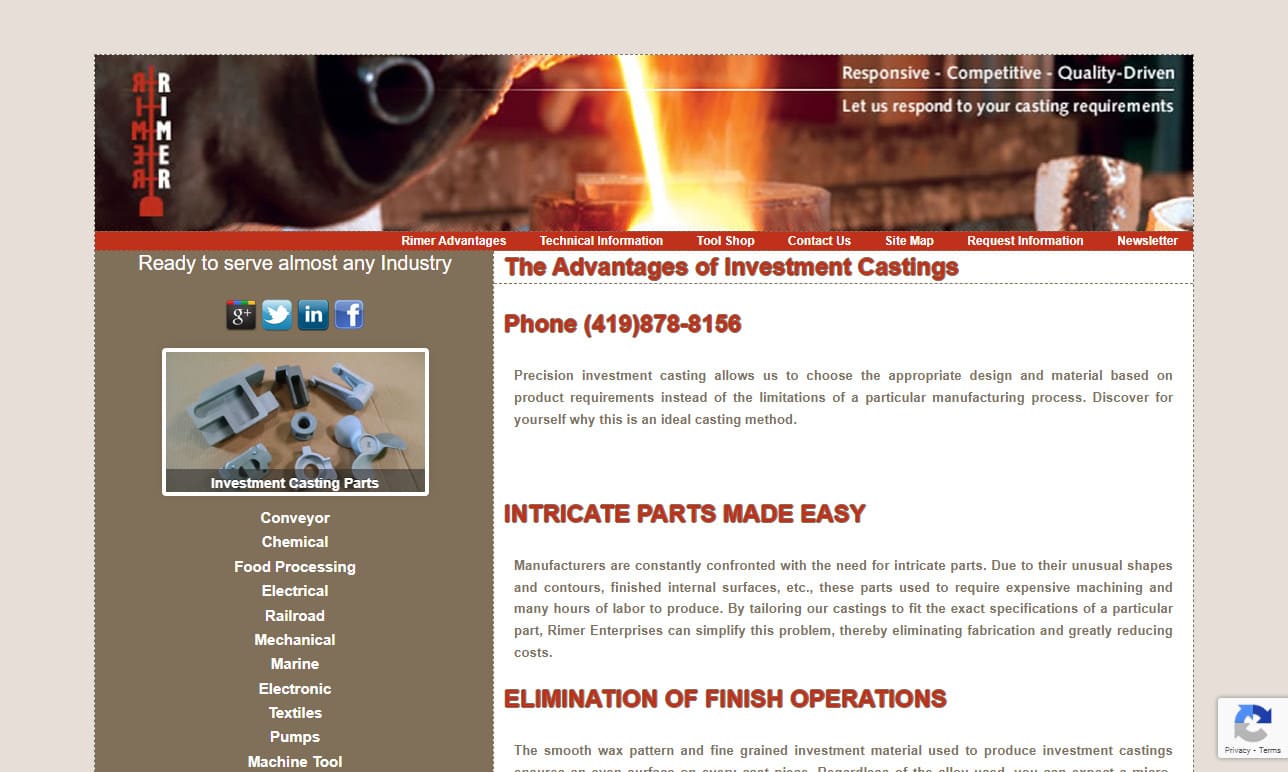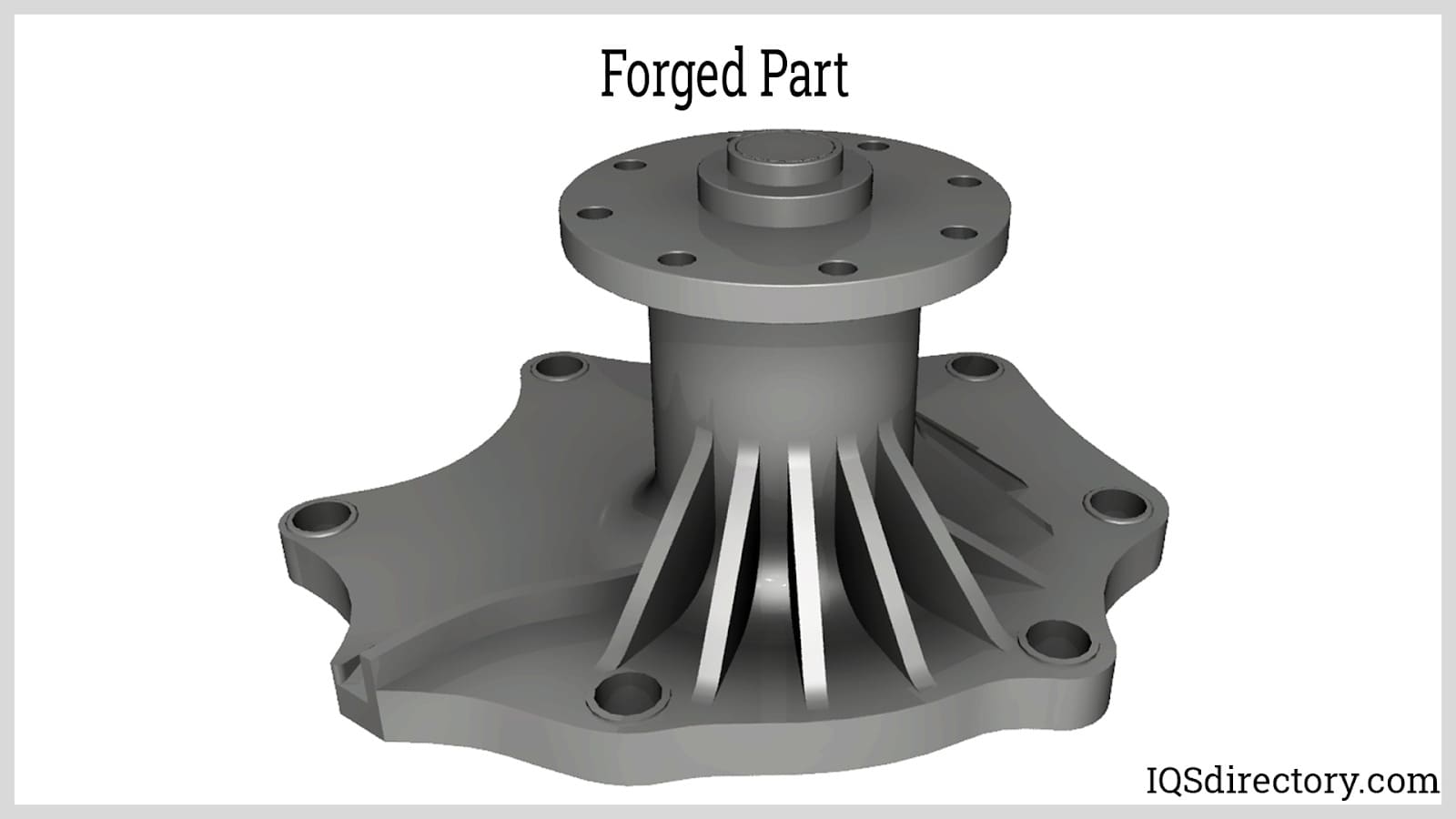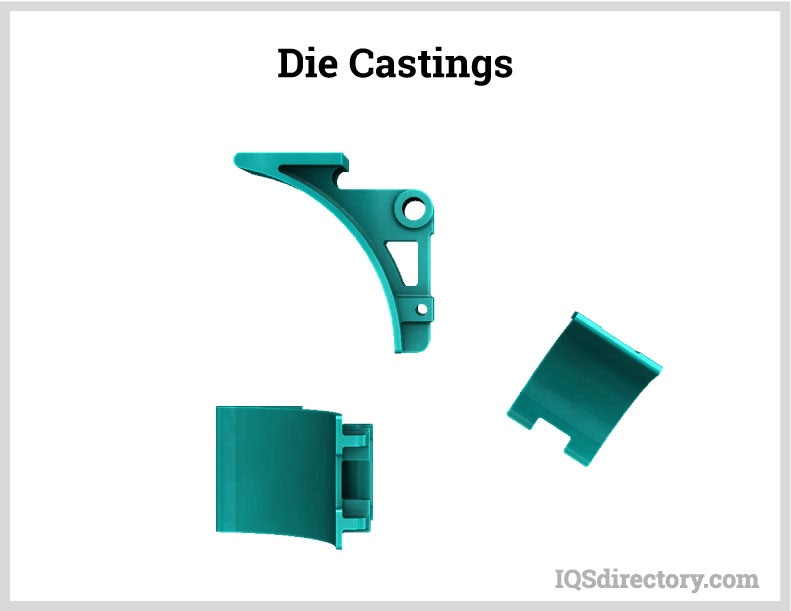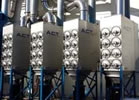Iron is the most prominent element in steel alloys, with carbon coming in second. Additional elements such as manganese, chromium, vanadium, and tungsten may be included in steel investment castings. Read More…
Founded in 2011, Lodestar Quality LLC is a knowledge-driven custom manufacturing solutions provider that provides manufacturers of products a full range of services from innovative design and engineering, to sourcing and production using best in class quality control methods in a cost efficient manner. Focus areas include fabrications, castings, machining and forging, plastic products, and...

Since 1944 we have been driven to remain a cut above the competition in investment castings and everything we do. We have our own tooling shop filled with state-of-the-art testing machines. We ensure perfect results every time. It is our goal to establish lifelong relationships with our customers that benefit us both. Contact us for more info today!

At Associated MetalCast, we specialize in precision investment castings, delivering high-quality metal components with intricate geometries and superior surface finishes. Our expertise spans a range of industries, where we provide cost-effective solutions that meet tight tolerances and complex design requirements. Using advanced casting techniques and top-grade materials, we ensure durability,...

As one of the leading privately-owned metal investment cast foundries in the US, Aero Metals, Inc. provides complex cast metal parts to the world with precision investment castings. Since 1961, we’ve been helping customers in various industries achieve their goals by providing cast metal pre-production prototypes through fully finished part production and assembly of finished products.

At Engineered Precision Casting Company, we specialize in producing high-quality investment castings that meet the rigorous demands of industries where precision and reliability are critical. As a team of experienced professionals, we take pride in our ability to transform complex designs into net-shape components with exceptional dimensional accuracy and superior surface finishes.

At Niagara Investment Castings Ltd., we specialize in delivering high-precision investment castings tailored to meet the demands of diverse industrial applications. As a team deeply committed to quality and innovation, we work closely with our customers to transform complex designs into durable, high-performance metal components.

More Steel Investment Casting Companies
The strength and durability of a particular casting is largely dependent upon the specific metallurgical composition. In general, steel and especially stainless steel investment casting are popular in industrial applications as they are stronger than cast iron, wrought iron, and malleable iron. These parts are capable of enduring shocks, wear, and heavy loads.
Though these features can be attributed in large part to the material itself, investment casting allows for the creation of completed precision parts with no flash or parting lines. Because the wax molds are exact replicas of the desired final product, accuracy is easily attained and parts rarely require additional processing.
Because steel investment castings are used in such varied industries as aerospace, automotive, construction, dental, medical, military, mining, food processing, sports, and telecommunications; it is important to consider the design and material used to create a specific component to ensure it is suited to its intended use.
When ordering steel investment castings, the type of steel that will be used to produce the part must be identified. Steel investment castings are usually ordered to ASTM requirements and may be made from carbon steel, low and high alloys steel, low-temperature steel, heat resistant steel, and stainless steel, among others. By specifying the test methods for an order, the requirements of the material can be guaranteed.
Though the material composition of the steel is variable, the investment casting process is relatively straightforward.
First, a wax pattern is carved by hand, machine, or created through injection molding. This model is often a prototype and must meet the exact specifications of the finished part.
The wax master die is then mounted on a wax rod known as a sprue. In some cases several dies are attached to a single sprue creating what is known as a tree.
The assembly is then dipped into a ceramic slurry known as the investment until thoroughly covered. For particularly complex designs, the sprue may be placed in a flask that is then filled with investment and vibrated to remove air pockets and ensure complete adherence to the pattern.
This coating is then dried and hardened using an oven or furnace which also melts the wax. Additional heating may be required to remove moisture or wax residue. As the wax runs out, a hollow shell is left.
Molten steel is poured into it. Once the steel is fully cooled the shell is removed by water-blasting, dissolving agent, or other method to reveal the finished steel product.













 Die Castings
Die Castings Forgings
Forgings Grey Iron Castings
Grey Iron Castings Investment Castings
Investment Castings Castings & Forgings
Castings & Forgings Bulk Material Handling
Bulk Material Handling Electrical & Electronic Components
Electrical & Electronic Components Flow Instrumentation
Flow Instrumentation Hardware
Hardware Material Handling Equipment
Material Handling Equipment Metal Cutting Services
Metal Cutting Services Metal Forming Services
Metal Forming Services Metal Suppliers
Metal Suppliers Motion Control Products
Motion Control Products Plant & Facility Equipment
Plant & Facility Equipment Plant & Facility Supplies
Plant & Facility Supplies Plastic Molding Processes
Plastic Molding Processes Pumps & Valves
Pumps & Valves Recycling Equipment
Recycling Equipment Rubber Products & Services
Rubber Products & Services